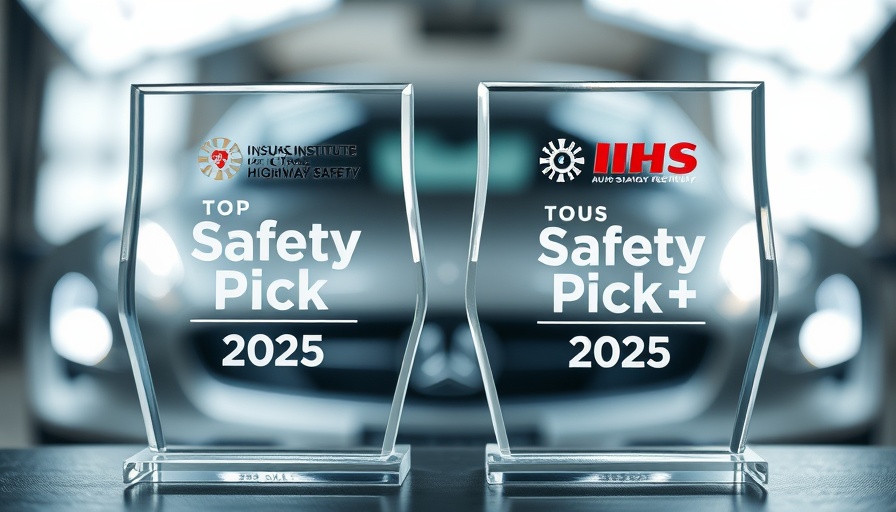
IIHS Innovates Safety Standards: An Overview
The Insurance Institute for Highway Safety (IIHS) has taken a significant step in vehicle safety by introducing updated criteria for its Top Safety Pick and Top Safety Pick+ awards starting in 2025. This initiative places a stronger focus on the protection of second-row occupants, thereby aligning with the evolving needs of modern families and the realities of road safety. As of March 2025, only 48 car models qualify for the new awards, down from 71 last year. This change highlights the auto industry's responsibilities not just for front-seaters, but for all passengers.
Why Back Seat Protection Matters
Back seat safety has sometimes been an afterthought in vehicle design. Many manufacturers have traditionally focused on front-seat safety features, leaving vulnerabilities in the rear. The disparity in safety ratings between front and back seats can be astonishing; according to the IIHS, belted adults in the rear seats face a higher risk of fatal injuries compared to their front-seat counterparts. By promoting initiatives that focus on back seat protections, IIHS is pushing automakers to develop advanced seat belt technologies and design innovations that make all vehicle occupants safer.
The Importance of Updated Testing Measures
Changes in testing methodology are at the heart of IIHS's new guidelines. The updated moderate overlap front test now evaluates rear-seat performance by introducing a second dummy in the back seat—representing a female or a child. This additional measure will help to understand and mitigate the unique risks faced by smaller passengers. Harkey, IIHS’s president, emphasizes that meeting these new challenges is crucial for ensuring high safety levels in vehicles, which traditionally have let design standards fall short in accommodating all passengers.
Market Implications: The SUV Dominance
One notable outcome of these updated safety ratings is the emerging dominance of SUVs in the winner's list. Out of 36 Top Safety Pick+ awards, SUVs account for a significant bulk, sparking conversations about the shifting landscape of consumer preferences in vehicle safety. The practicality and popularity of SUVs make them a focal point, while other vehicle categories, including traditional minivans and pickups, have seen a decline in recognition. This shift raises questions about whether manufacturers will rethink their strategies moving forward, particularly for family-oriented vehicles.
The Future of Vehicle Safety: Trends and Predictions
As we look to the future, automakers will be challenged to innovate continually. With the IIHS setting the bar higher for vehicle safety, it is not just about meeting current safety standards; manufacturers must anticipate future safety needs. We expect to see further developments in technology for active protection systems, such as automatic braking and pedestrian detection systems. These innovations may reduce crash severity, particularly in urban driving environments.
What This Means for Drivers
For vehicle owners, these changes underscore the importance of safety assessments when purchasing a car. The possibility of lower ratings for popular models can affect insurance premiums, resale value, and, most importantly, passenger safety. Understanding how your vehicle performs in crash tests can influence both their financial decisions and their family's well-being. Awareness of these changes can help consumers shop more intelligently, ensuring they prioritize safety alongside other factors such as price and style.
Empower Yourself with Knowledge
Staying informed about changes in vehicle safety ratings and requirements can help you navigate the complex world of property damage, car accident damage, and insurance claims. Proper understanding of new guidelines and testing measures will better position you to communicate with insurance adjusters accurately. Knowledge allows you to advocate effectively for your interests should you end up navigating the accident aftermath.
Remember, awareness is your best ally in making informed choices. By understanding the evolving landscape of vehicle safety, you’re also better equipped to manage repairs and insurance needs efficiently.
#Call to Action: Take a moment today to evaluate your vehicle's safety ratings and consider what it means for you and your family. In light of the new IIHS guidelines, inquire about advanced safety features at your dealership or research what constitutes top-rated safety in vehicles.
 Add Row
Add Row  Add
Add 




Write A Comment